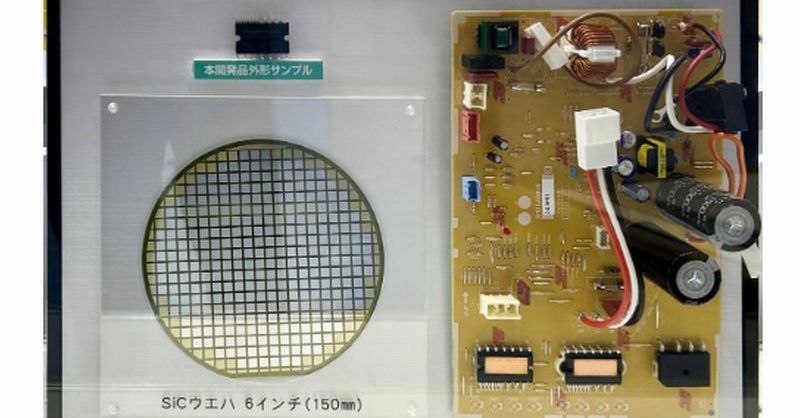Improved Aircon Efficiency: The SiC Chip Parallel System Revolution
The quest for energy efficiency is constant, and nowhere is this more crucial than in the cooling sector. Traditional air conditioning systems are notorious energy guzzlers, contributing significantly to carbon emissions. However, a groundbreaking development promises to dramatically change this: the SiC chip parallel system. This innovative technology is poised to revolutionize air conditioning efficiency, offering significant benefits for both consumers and the environment.
What is a SiC Chip Parallel System?
At the heart of this technological advancement lies the silicon carbide (SiC) semiconductor. SiC boasts superior properties compared to traditional silicon, enabling it to handle higher voltages and temperatures with significantly lower energy loss. In a parallel system, multiple SiC chips work together to manage the power flow to the air conditioner's compressor. This parallel architecture allows for more precise control and optimized power delivery, resulting in substantial efficiency gains.
Key Advantages of SiC Chip Parallel Systems:
- Higher Efficiency: SiC chips dramatically reduce energy loss during power conversion, leading to a significant increase in overall air conditioning efficiency. This translates to lower electricity bills and a smaller carbon footprint.
- Improved Power Factor: These systems often exhibit a higher power factor, meaning they draw less reactive power from the grid, further enhancing energy efficiency and reducing strain on the electrical infrastructure.
- Smaller and Lighter: SiC chips are generally smaller and lighter than their silicon counterparts, allowing for more compact and lightweight air conditioning units.
- Enhanced Reliability and Durability: SiC's inherent robustness contributes to increased reliability and a longer lifespan for the air conditioning system.
- Faster Response Times: The parallel architecture allows for faster and more precise control of the compressor, leading to quicker cooling and temperature stabilization.
How Does it Compare to Traditional Systems?
Traditional air conditioners often rely on older, less efficient power conversion technologies. The introduction of SiC chip parallel systems represents a significant leap forward. Independent tests have shown energy savings of up to 30% compared to conventional systems, a remarkable improvement with substantial long-term implications.
Environmental Impact and Future Applications
The widespread adoption of SiC chip parallel systems holds immense potential for mitigating climate change. By significantly reducing energy consumption in the cooling sector, this technology contributes to lower greenhouse gas emissions. The environmental benefits extend beyond direct energy savings; the smaller size and lighter weight of the units also contribute to reduced manufacturing and transportation impacts.
Beyond air conditioning, SiC chip parallel systems have promising applications in other sectors requiring efficient power conversion, including:
- Electric Vehicles: Improving the efficiency of electric vehicle powertrains.
- Industrial Motors: Boosting the efficiency of industrial machinery.
- Renewable Energy Systems: Optimizing the performance of solar and wind power systems.
The Future of Cooling: A Greener Tomorrow
The SiC chip parallel system signifies a major step towards a more sustainable future. As the technology matures and production scales, we can expect to see its widespread adoption in residential and commercial air conditioning systems. This innovative approach to power conversion is not just about efficiency; it's about building a greener and more energy-conscious world.
Call to Action: Learn more about energy-efficient cooling solutions by exploring [link to relevant resource/website]. Let's work together towards a more sustainable future.
